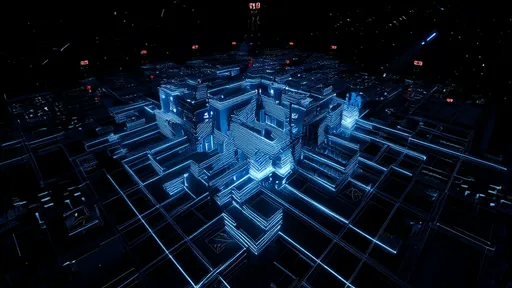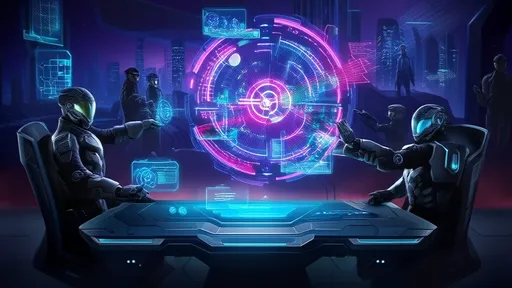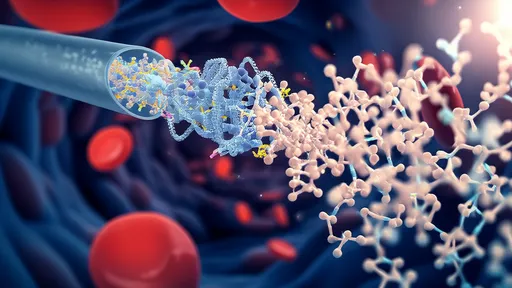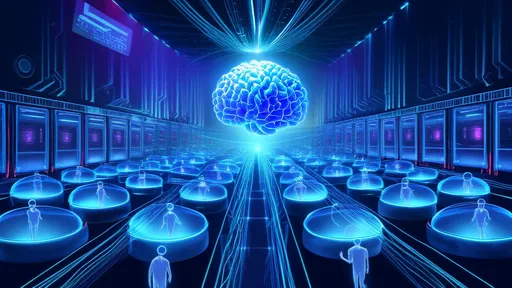The dark web has long been shrouded in mystery, often depicted as a digital underworld teeming with illicit activities and hidden dangers. Yet, beneath the sensationalized portrayals lies a complex network architecture that mirrors—and in some cases, predates—the surface web we use every day. Exploring the dark web is akin to navigating a labyrinthine maze, where each turn reveals layers of encryption, anonymity protocols, and decentralized systems. This article delves into the structural foundations of the dark web, examining how its design enables both secrecy and resilience while drawing parallels to real-world network infrastructures.
The Architecture of Anonymity
At the heart of the dark web is the Tor network, short for The Onion Router. Unlike traditional web traffic, which flows through easily traceable pathways, Tor routes data through multiple layers of encrypted relays. This "onion routing" ensures that no single node can see both the origin and destination of a communication. The result is a system where users can interact with near-total anonymity. But Tor is just one piece of the puzzle. Other networks, such as I2P (Invisible Internet Project) and Freenet, employ their own unique protocols to obscure user identities and data. These systems are not merely tools for clandestine operations; they are testaments to the ingenuity of decentralized design.
What makes the dark web particularly fascinating is its resemblance to certain real-world infrastructures. Consider, for example, the postal system. Just as a letter passes through multiple sorting facilities before reaching its destination, dark web data hops through numerous relays. The difference lies in the deliberate obfuscation of the path. This architectural choice is not arbitrary—it reflects a deliberate effort to counteract surveillance and censorship. In countries with restrictive internet policies, the dark web often serves as a lifeline, enabling free expression and access to information.
The Marketplace Paradox
One cannot discuss the dark web without addressing its most infamous feature: underground marketplaces. Sites like Silk Road, though long shuttered, have become emblematic of the dark web's dual nature. On one hand, these platforms facilitate illegal trade; on the other, they demonstrate the robustness of decentralized commerce. Cryptocurrencies like Bitcoin and Monero act as the lifeblood of these transactions, offering a level of financial privacy that traditional banking cannot. The irony is that the same technologies enabling black-market sales also empower whistleblowers and activists operating under oppressive regimes.
The resilience of these marketplaces is a direct consequence of the dark web's architecture. When law enforcement shuts down one node, others emerge in its place, much like hydra heads. This phenomenon is not unique to the digital realm. Urban drug markets, for instance, often relocate in response to police crackdowns. The dark web simply scales this dynamic globally, leveraging encryption and peer-to-peer networks to evade control. Yet, this very resilience raises ethical questions. How does society balance privacy rights with the need to curb illegal activities? The answer remains elusive, but the debate is far from academic.
The Hidden Layers of Legitimacy
Contrary to popular belief, the dark web is not solely a haven for criminals. Journalists use it to communicate with sources in hostile environments. Academics leverage its resources to bypass paywalls and access restricted research. Even corporations employ dark web monitoring to detect data breaches and intellectual property theft. These legitimate uses underscore a critical point: the dark web's architecture is morally neutral. Its value depends entirely on the intentions of those who use it.
This duality mirrors the early days of the surface internet, which was once dismissed as a playground for tech enthusiasts. Over time, it evolved into a global utility. Whether the dark web follows a similar trajectory remains to be seen. What is certain is that its underlying technology—decentralization, encryption, and anonymity—will continue to influence the broader digital landscape. As governments and corporations grapple with data privacy concerns, the innovations born on the dark web may well become mainstream solutions.
The Future of the Maze
As surveillance technologies advance, so too do the tools for evading them. The dark web is in a constant state of flux, with developers and users alike adapting to new challenges. Quantum computing, for instance, poses a potential threat to current encryption standards. In response, researchers are already exploring post-quantum cryptography to future-proof anonymity networks. This cat-and-mouse game is not unique to the digital age; it echoes centuries of conflict between code-makers and code-breakers.
What sets the dark web apart is its global scale and accessibility. Unlike physical safe havens, which are limited by geography, the dark web is borderless. This universality makes it a microcosm of the broader internet's promises and perils. It challenges us to reconsider fundamental notions of privacy, freedom, and governance. Whether viewed as a threat or a necessity, the dark web is undeniably a reflection of our collective desires and fears in an increasingly connected world.
The maze is vast, and its pathways are ever-shifting. But for those willing to venture beyond the surface, it offers a glimpse into the future of digital autonomy—for better or worse.

By /Jul 3, 2025

By /Jul 3, 2025

By /Jul 3, 2025

By /Jul 3, 2025

By /Jul 3, 2025

By /Jul 3, 2025

By /Jul 3, 2025

By /Jul 3, 2025

By /Jul 3, 2025

By /Jul 3, 2025

By /Jul 3, 2025

By /Jul 3, 2025

By /Jul 3, 2025

By /Jul 3, 2025

By /Jul 3, 2025

By /Jul 3, 2025

By /Jul 3, 2025

By /Jul 3, 2025